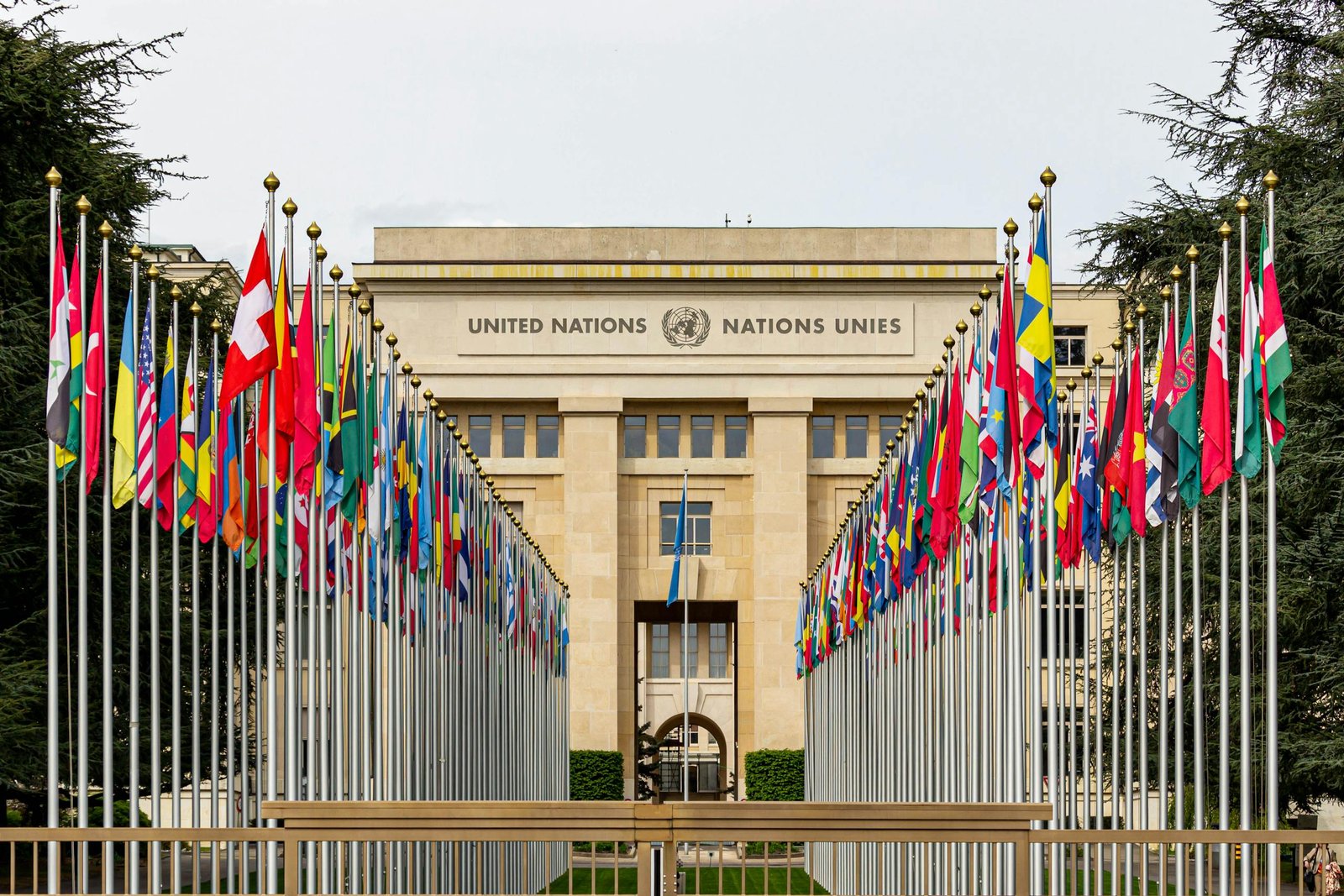UN Disarmament Toolkit 2025: Landmines, SALW & Arms Control
Hello friends,
Session 4 of the Disarmament Toolkit 2025 just wrapped on Wednesday, and even though I missed the first half hour (I was late because I was teaching a few hundred kids; that blog post is coming!), the remaining hours were packed with the kind of grounded, practitioner wisdom that keeps me optimistic about disarmament, even in a hard year.
This session today, starting the second week of disarmament meetings, shifted from last week’s emerging tech focus to the everyday realities of conventional weapons: landmines, cluster munitions, small arms and light weapons (SALW), and the human systems that either keep them safe or let them leak into violence. We also got an excellent case study from the Western Balkans on how a region can turn hard lessons into durable, data-driven policy.
Here are my top takeaways and why they matter right now.
Humanitarian mine action: norms under strain, practice still saving lives
I jumped in as Llewelyn Jones (MAG) was wrapping the landscape: states party to the Mine Ban Treaty (APMBC) and Convention on Cluster Munitions (CCM) must destroy stockpiles and clear contamination. And when they don’t have capacity, international assistance exists. That machinery works. But some states are now withdrawing or signalling intent to withdraw, citing security concerns linked to the war in Ukraine.
Two important correctives from the discussion:
- The treaties have adapted: IEDs triggered by persons are recognised as anti-personnel landmines under treaty logic. Norms evolve with tactics.
- Universalisation is still alive: Vanuatu joined the CCM last week, small states matter, and they set pace.
The UN’s role is neither theatrical nor toothless
Alice Marzi gave the reality check I appreciate: the UN is depository, protector, and enabler—not the field operator. Implementation sits with states and expert organisations; the UN keeps the table open, the law clear, the political lanes lit, and the escalation pathways peaceful.
Three ways that shows up:
- Quiet, constant treaty support: advising on compliance articles, shepherding meetings of states parties (the CCM MSP happens next week in Geneva), and defending norms in tough seasons.
- A new global campaign: after the Secretary-General’s Executive Committee reviewed funding cuts and norm erosion in mine action and humanitarian disarmament, he launched a system-wide campaign to rebuild commitment, visibility, and resources. This is a signal—and an organising opportunity.
- De-escalation by design: When Thailand alleged Cambodia used anti-personnel mines along the border, the APMBC’s dispute provisions kicked in. States get a legal route through the Secretary-General—frustration is channeled away from force. That’s what mature regimes do.
Why demining takes time (and how to speed what can be sped)
Llewelyn handled the evergreen “why is this taking so long?” with refreshing honesty: the original contamination in places like Cambodia was massive; progress is real (annual casualties now are lower than monthly totals 20 years ago), but new use in active conflicts (Ukraine, Myanmar) grows the baseline; and work can’t safely proceed in active combat zones. Add shifting donor attention and you have a grinding asymmetry: long, slow, expensive work vs. short, cheap acts of contamination.
What helps:
- Stable funding beyond headline conflicts.
- Regional reputational capital that opens doors to sensitive sites.
- Patient trust-building to access secure stockpiles and fix the leakage that feeds illicit markets.
Small arms, armed violence, and the craft weapons we don’t see coming
Monalisa Hazarika’s brief on craft-produced weapons was a necessary jolt. We talk about factory guns; the streets don’t always use them.
What stuck with me:
- Craft weapons are a significant share of illegal firearms in many places, ranging from crude single-shots to semi-professional replicas; increasingly, 3D-printed “part kits” and hybrids.
- Definitions are messy, but the UN Firearms Protocol (binding), the UN Programme of Action (UNPoA) and the International Tracing Instrument (ITI) (political) already contain the hooks to regulate illicit manufacture regardless of method.
- Her case study on “Pompey Guns” in Manipur (India) shows real-world improvisation: improvised cannons and shoulder-fired launchers built from tubing, bipods, and whatever works. You can’t regulate what you refuse to define; you can’t interdict what you don’t study.
The UN is moving here, too: last year’s UNPoA Review Conference established an open-ended technical expert group (meets in 2026) to tackle new manufacturing tech and design practices, and to propose ways to strengthen the regime. That’s where additive manufacturing, unregulated parts, and traceability challenges get codified into workable guidance.
Armed violence and development: the Papua New Guinea lesson
Aaron’s intervention made the stakes visceral. In parts of PNG, long-standing (and problematic) tribal conflict resolution once meant machetes and negotiated compensation. The entry of guns flipped the calculus: dozens killed, impossible compensation demands, violence that spirals instead of settles. Guns don’t just make violence deadlier—they break the social mechanisms that contain it.
Two points I’m taking forward:
- Arms control is development policy. Schools and clinics can be wiped out by a weekend’s armed sweep. Without PSSM, border control, and tracing, development is just rearranging furniture.
- Diversion prevention is a craft: strict inventory control, serialising and marking, records that actually get checked, and destruction that truly destroys (hydraulic shears > bonfires). I smiled at Aaron’s Korean-military anecdote: count bullets out, count casings in. It’s mundane, and it works.
Frameworks that matter and how UNRCPD is using them
If you’re new to the alphabet soup, here are the pillars we leaned on all session:
- UNPoA + ITI: the backbone for controlling manufacture, marking, record-keeping, tracing, transfer, brokering, and stockpile management—with biennial reporting that turns aspiration into accountability.
- Firearms Protocol: binding criminal law obligations on illicit manufacturing and trafficking.
- Arms Trade Treaty: the trade gatekeeper (116 States Parties and counting), complementary to UNPoA’s lifecycle controls.
UNRCPD’s value-add in Asia-Pacific is practical: legal reviews to align national law with these norms; regional coordination (ASEAN is building a regional action plan on illicit arms trafficking, learning directly from the Balkans); assessments and upgrades of armouries; and old-fashioned capacity building so states are rule-makers, not just rule-takers.
Gender, guns, and the Western Balkans: data that changes policy
Dragan Bozanić (UNDP SEESAC/CSAC) closed with the best kind of regional lesson: specific, transparent, and replicable.
What works:
- Build a regional architecture that governments own. The Western Balkans Small Arms Control Roadmap (now extended to 2030) takes UN/EU/OSCE commitments and translates them into regional goals, milestones, and shared monitoring. It’s 360-degree support: laws, policy, operations, PSSM, border work, training, and public campaigns.
- Measure everything. Their Armed Violence Monitoring Platform aggregates media and official reports daily. In six years: 18,000+ firearm incidents tracked. Almost half are seizures (a proxy for better law enforcement), organised crime trends go up and down meaningfully, and—most important—more people are killed by firearms in domestic violence than in criminal contexts. That single data point has reshaped policy priorities.
- Mainstream gender, don’t bolt it on. The numbers are stark:
- 97%+ of civilian-owned firearms belong to men.
- ~99% of firearm perpetrators are men; young men drive incidents disproportionately.
- Women almost never misuse firearms, but are 12x more likely to be victims of firearm misuse than perpetrators.
- 68% of women killed with firearms in the region were killed in domestic violence; for men, ~11%.
- Women feel less safe with guns at home; men feel more protected. Those are different realities, requiring different policy levers.
What they’re doing about it:
- Protocols for police responding to domestic violence that factor firearm risk.
- Licensing guidelines that weigh GBV indicators and household risk.
- Campaigns aimed at the riskiest behaviours and cohorts (especially young men).
- Increasing women’s participation in the security sector and in SALW policymaking.
Why this session mattered
- It showed how mature regimes protect norms under pressure, and adapt (IEDs recognised as mines, expert groups set up for 3D-printed weapons).
- It connected the dots between field practice (demining, PSSM, destruction) and macro outcomes (development, social cohesion, interstate stability).
- It demonstrated that regionalism can be a force multiplier (even among neighbours with difficult histories) when data, transparency, and steady political commitment are present.
- It kept gender not as a checkbox, but as the analytical core that makes policy effective.
What I’m doing next
- Following up with speakers to capture written answers we couldn’t get to live, especially on dispute resolution under APMBC/CCM, access to military stockpiles, and safeguards against abuse in firearms licensing.
- Working with Aaron and the team to share a clean resource pack: UNPoA/ITI reporting links, CCM/APMBC meeting info, the SG’s new humanitarian disarmament campaign, MAG’s field resources, and SEESAC’s Roadmap and data portal.
- Doubling down on the regional lesson-sharing between ASEAN and the Western Balkans on illicit trafficking and gender-responsive SALW control.
If you’ve got thoughts on any of this, craft weapons in your region, demining funding gaps, domestic violence/firearm linkages, send them my way. The best part of these sessions is how quickly good ideas move when they’re real, specific, and grounded in evidence.
And to those who ask: yes, that teaching- hundreds-of-kids blog is next. Please look forward to it!
Onward,
Avi
P.S. If MAG works in your country, follow them. Their feed is a masterclass in how policy translates to lives saved. And if you’re in ASEAN policy circles, watch the emerging regional action plan on illicit arms trafficking; this is one to shape, not just applaud.
Avi is a multidisciplinary researcher with expertise in science, technology and international relations. University of Cambridge alumni, Avi’s knowledge spans key areas such as AI policy, international law, and the intersections of emerging technology with global affairs. Avi is passionate about exploring new cultures and technological advancements, sharing his insights through detailed articles, reviews, and research. His content helps readers stay informed, make smarter decisions, and find inspiration for their own journeys.






